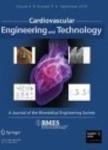版权所有:内蒙古大学图书馆 技术提供:维普资讯• 智图
内蒙古自治区呼和浩特市赛罕区大学西街235号 邮编: 010021

作者机构:Univ Birmingham Dept Mech Engn Birmingham B15 2TT W Midlands England
出 版 物:《CARDIOVASCULAR ENGINEERING AND TECHNOLOGY》 (心血管工程技术)
年 卷 期:2020年第11卷第4期
页 面:431-447页
核心收录:
学科分类:0831[工学-生物医学工程(可授工学、理学、医学学位)] 1002[医学-临床医学] 100201[医学-内科学(含:心血管病、血液病、呼吸系病、消化系病、内分泌与代谢病、肾病、风湿病、传染病)] 10[医学]
主 题:Bicuspid aortic valve Congenital malformation Fluid-structure interaction Multi-physics modelling
摘 要:Purpose Bicuspid aortic valve (BAV) is a congenital heart malformation with phenotypic heterogeneity. There is no prior computational study that assesses the haemodynamic and valve mechanics associated with BAV type 2 against a healthy tricuspid aortic valve (TAV) and other BAV categories. Methods A proof-of-concept study incorporating three-dimensional fluid-structure interaction (FSI) models with idealised geometries (one TAV and six BAVs, namely type 0 with lateral and anterior-posterior orientations, type 1 with R-L, N-R and N-L leaflet fusion and type 2) has been developed. Transient physiological boundary conditions have been applied and simulations were run using an Arbitrary Lagrangian-Eulerian formulation. Results Our results showed the presence of abnormal haemodynamics in the aorta and abnormal valve mechanics: type 0 BAVs yielded the best haemodynamical and mechanical outcomes, but cusp stress distribution varied with valve orifice orientation, which can be linked to different cusp calcification location onset;type 1 BAVs gave rise to similar haemodynamics and valve mechanics, regardless of raphe position, but this position altered the location of abnormal haemodynamic features;finally, type 2 BAV constricted the majority of blood flow, exhibiting the most damaging haemodynamic and mechanical repercussions when compared to other BAV phenotypes. Conclusion The findings of this proof-of-concept work suggest that there are specific differences across haemodynamics and valve mechanics associated with BAV phenotypes, which may be critical to subsequent processes associated with their pathophysiology processes.